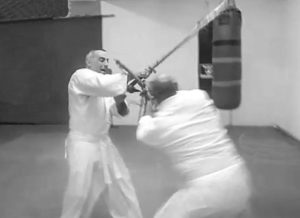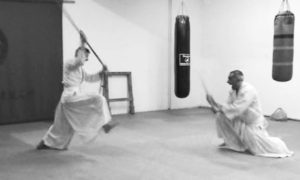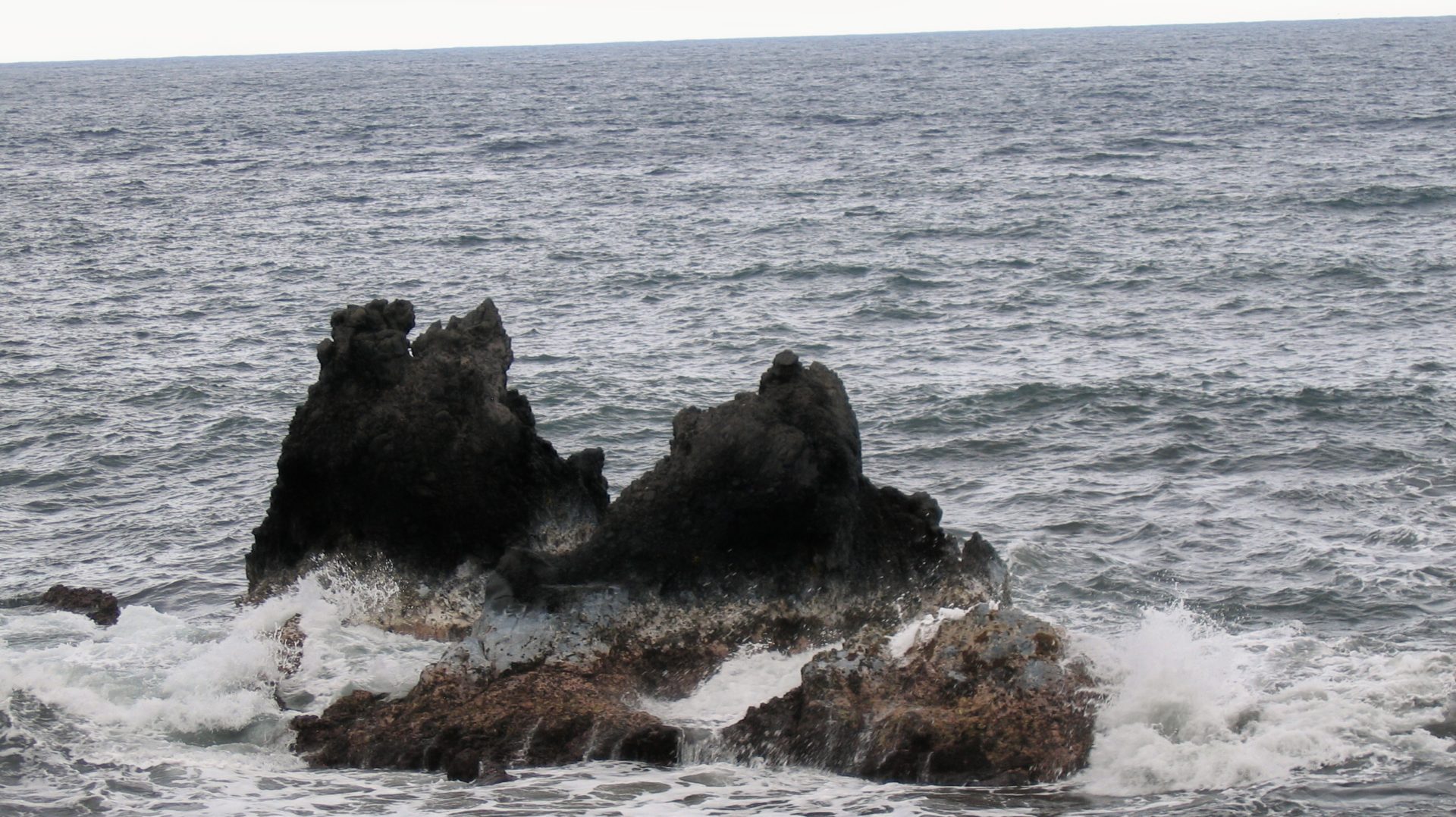A prerequisite for training in Taikyoku Araki-ryū is that you are already an established group, training in body-to-body grappling: jūdō, free-style or Greco-Roman wrestling, sambo, BJJ, sumō, etc. There are no exceptions to this requirement. (Additional training in muay thai or other forms of pugilism are a plus, but not required).
 The physical dynamics of Taikyoku Araki-ryū are identical to that of body-to-body wrestling, and requires the same kind of fluid adaptability to rapidly changing force. ‘Arms-length grappling,’ such as aikidō, Daitō-ryū, Hakkō-ryū, or many modern styles of European/American jujutsu that do not work body-to-body, does not suffice. (Please understand that these styles are great practices in-and-of themselves. If you are skilled in such arts, some of what you’ve learned may well contribute to learning Taikyoku Araki-ryū. However, Taikyoku Araki-ryū is developed by body-to-body, connected grappling.)
The physical dynamics of Taikyoku Araki-ryū are identical to that of body-to-body wrestling, and requires the same kind of fluid adaptability to rapidly changing force. ‘Arms-length grappling,’ such as aikidō, Daitō-ryū, Hakkō-ryū, or many modern styles of European/American jujutsu that do not work body-to-body, does not suffice. (Please understand that these styles are great practices in-and-of themselves. If you are skilled in such arts, some of what you’ve learned may well contribute to learning Taikyoku Araki-ryū. However, Taikyoku Araki-ryū is developed by body-to-body, connected grappling.)
Prerequisites – The Mind
If you find yourself intrigued by Japanese martial traditions, and in particular, Taikyoku Araki-ryu, it is important that you get some idea of what koryu really is – and in particular, my thinking about it. Training is a serious commitment – why waste time if you were to find that what I teach is nothing like you expected. Therefore, read the following book, before contacting me.
Old School: Essays on Japanese Martial Traditions – Expanded Edition
Training Methodology
The core method of practice is two-person forms known as kata. However, there are also a number of necessary solo training methods to build power, technique and proper physical organization.
Taikyoku Araki-ryū attempts to make the kata more powerful through ‘live’ practice – from the very beginning, movements are isolated out from a form and used as a jumping-off point for various forms of semi-freestyle training – one might respond to a specific attack with any one of a number of techniques, rather than the one ‘programmed’ in that sequence of the kata. The reverse can also be enacted – one must use a single technique to defend against a variety of attacks. Long-term students occasionally put on body-armor and practice full-power sparring.
The goal of these and other training methods is to practice in a way that will hone one’s skills to the highest level. Imagine a circle with a center point designating pure life-and-death combat. If one draws lines through that center point, one has a design much like a pie-chart, with each section representing one training method that allows one to concentrate intensely on one or two requirements for combat, in a way that does not require the participants to put themselves at excessive risk of permanent injury.
Such training as grappling, boxing or kick boxing, in which one strives against a fully resisting opponent, albeit within rules, is also an essential experience. One learns something about oneself in a manner that is impossible to achieve otherwise. In addition, the experience of adaptation to the unscripted movements of the opponent, who is simultaneously striving to disrupt or defeat your technique is a skill that is transferrable to weapons training where pure freestyle is impossible outside combat.
Taikyoku Araki-ryū strives to study a method of using the body and weaponry in which hand-to-hand/body-to-body and weapon usage are melded into a single practice, where one develops the improvisational adaptability that is inherent in the best grapplers.
Taikyoku Araki-ryū is only for serious established training groups who work together as an association of ‘training brothers.’ I am not taking on solo students and I am not taking on groups that do not meet all the criteria in this FAQ. All members of the group. Furthermore, I have absolutely no interest whatsoever in working with people who would like to learn ‘Araki-ryū lite,’ a supplement to their main practice. The curriculum is circumscribed, but in no way watered down. Due to my own responsibilities, I value my time and although I am open to working to others, I am not trying to make something widespread. This is not, therefore, an attempt to ‘mainstream’ Araki-ryū, making it a popularized martial art. We currently have training groups in Palos Verdes, California, and Portland, Oregon.
